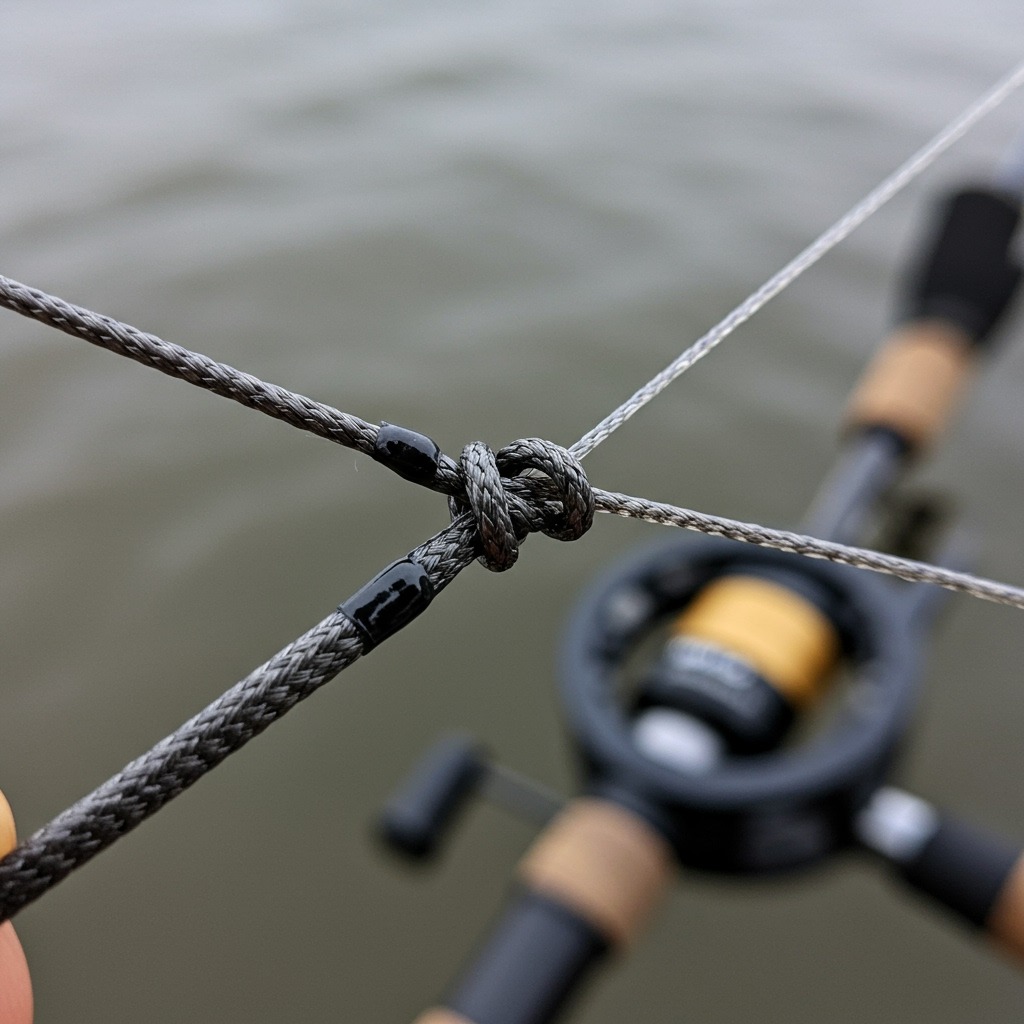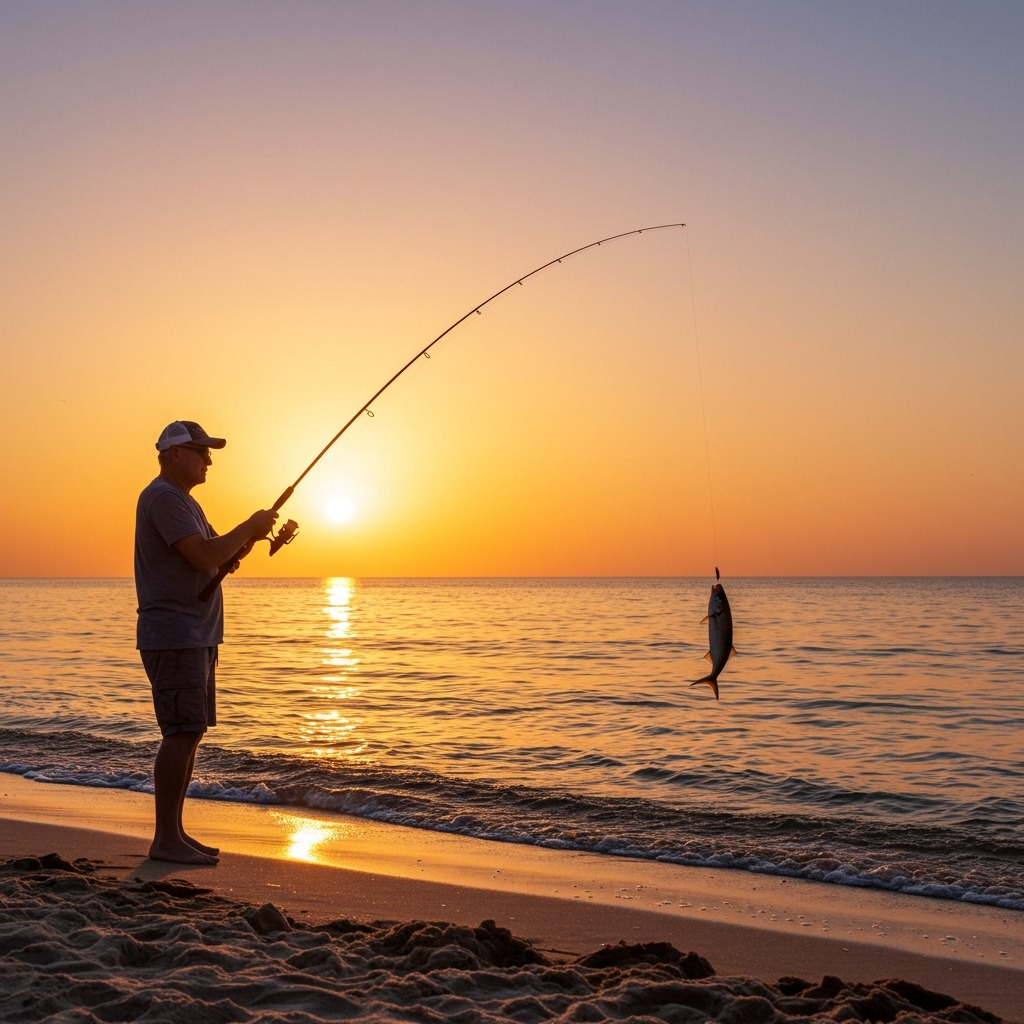Ready to connect your fishing lines with confidence? The Alberto knot is a game-changer, especially when joining lines of different diameters or materials, like braided main lines to fluorocarbon or monofilament leaders. It’s a favorite among experienced anglers for its incredible strength and relatively slim profile.
But let’s be honest, tying knots can be tricky. You want a knot that’s reliable, won’t slip, and stands up to the fight. You also want a knot you can tie efficiently, whether on a rocking boat or in low light. That’s where the Alberto knot shines.

Why Choose the Alberto Knot?
Many anglers swear by the Alberto knot. Why? Because it offers a winning combination of strength, efficiency, and a sleek profile that passes smoothly through your rod guides.
- Exceptional Strength: The Alberto knot, when tied correctly, maintains a high percentage of your line’s breaking strength. This means you can trust it when battling a big fish. It’s often considered stronger than the Double Uni knot for braid-to-leader connections.
- Smooth Passing: Its compact design allows it to glide through rod guides with minimal friction. This translates to longer casts and less wear and tear on your gear.
- Versatility: While particularly popular for braid-to-mono or braid-to-fluoro connections, the Alberto knot is adaptable to various line types and diameters.
Who Invented the Alberto Knot?
The Alberto knot was created by legendary surf angler Alberto Knie, also known as “Crazy Alberto.” In 1993, he developed this modified Albright knot to specifically address the need for a reliable connection between the then-new “super lines” (braid) and traditional monofilament or fluorocarbon leaders. His dedication to sport fishing and meticulous approach led to a knot that has become a staple for countless anglers worldwide.
Alberto Knot vs. Other Popular Knots
You’ve probably heard of other knots for connecting lines. Let’s compare the Alberto knot to some common alternatives:
- Alberto vs. Albright Knot: The Alberto knot is actually a modified version of the Albright. While both are strong, the Alberto’s unique wrapping sequence (seven wraps up, then seven wraps back down) is designed to create a “Chinese finger trap” effect, enhancing its grip and making it even more secure, especially with slick braided lines.
- Alberto vs. FG Knot: The FG knot is renowned for its incredible strength and extremely thin profile. However, it’s notoriously difficult and time-consuming to tie, especially on the water. The Alberto knot offers a fantastic balance of strength and ease of tying, making it a preferred choice for many when quick, reliable connections are needed.
- Alberto vs. Double Uni Knot: The Double Uni knot is simpler to tie and effective for connecting lines of similar diameter. However, when dealing with significant differences in line size or material (like braid to heavy mono), the Alberto knot often proves to be the stronger and more secure option, particularly with braided lines.
How to Tie the Alberto Knot: Step-by-Step
Ready to learn how to tie this essential knot? It’s simpler than you think, especially with practice.
- Form a Loop in the Leader: Take your leader material (mono or fluorocarbon), and create a loop at one end. This will be the foundation of your knot. Make sure you have enough tag end to work with, about 8-12 inches.
- Pass the Braid Through the Loop: Take the tag end of your braided main line and pass it through the loop you just created in your leader. It should enter the loop from one side (say, from the front).
- Wrap Up the Leader: Hold the loop and the braided line in one hand. With the braided tag end, make seven tight wraps up the doubled leader line, moving away from the loop itself.
- Wrap Down the Leader: Now, make seven tight wraps back down the doubled leader line, wrapping over the wraps you just made. These wraps should lay neatly over the previous ones, moving towards the loop.
- Pass the Braid Back Through the Loop: Carefully pass the tag end of the braided line back through the original leader loop, ensuring it enters in the same direction it did initially. This is crucial for the knot’s integrity.
- Wet and Cinch: Moisten the knot with saliva. This helps the line slide and ensures a smoother, tighter cinch. Slowly and steadily pull on all four lines—the main braid, the braided tag end, the leader, and the leader tag end—to tighten the knot. You may need to gently push the wraps with your fingertips to help them seat properly. The wraps should slide down and gather neatly.
- Final Tightening and Trim: Once the wraps are snug, give a firm pull on the main braid and the leader to fully set the knot. Trim both tag ends close to the knot, leaving a small amount of tag for security.
Pro Tip: Consistency is key. Make sure your wraps are even and tight. If any wraps look loose or crossed, re-tie the knot. Practice makes perfect, so don’t get discouraged if it takes a few tries!

When to Use the Alberto Knot
The Alberto knot excels in situations where you need a strong, reliable connection between lines of different diameters or materials. Here are some common scenarios:
- Braid to Fluorocarbon Leader: This is perhaps the most common application. Braided lines offer sensitivity and casting distance, while fluorocarbon leaders provide invisibility and abrasion resistance. The Alberto knot creates a seamless and strong link. You can also use it for your surf fishing adventures where you might be casting longer distances and need a strong leader. If you’re looking for more general surf fishing tips, you might want to check out some great advice on the basics of surf fishing.
- Braid to Monofilament Leader: Similar to fluorocarbon, monofilament leaders are often used for their stretch and shock absorption. The Alberto knot handles this transition well.
- Heavy Line to Lighter Line: When you’re connecting a heavier main line to a lighter leader for finesse presentations, the Alberto knot maintains integrity.
- Inshore and Offshore Fishing: From striped bass to snook, the Alberto knot has proven its mettle in various saltwater environments. If you’re getting into fly fishing basics, understanding how to tie a strong leader knot like the Alberto knot is crucial for success.
Common Mistakes to Avoid
Even the best knot can fail if tied incorrectly. Watch out for these common pitfalls:
- Not wetting the knot: Skipping this step can cause friction and weaken the line as you tighten it.
- Uneven or loose wraps: Each wrap needs to be tight and uniform for the knot to hold properly.
- Incorrect tag end insertion: Ensure the braided tag end re-enters the leader loop in the exact same direction it first came through.
- Not cinching down fully: The knot needs to be firmly seated to achieve maximum strength and prevent slippage. Pull on all four lines until the knot is compact and tight. When you’re learning how to tie a hook on a fishing line or how to tie two fishing lines together, the principles of proper cinching remain the same.
Frequently Asked Questions about the Alberto Knot
Q: Is the Alberto knot the strongest fishing knot?
A: While exceptionally strong, the FG knot is often considered the strongest braid-to-leader knot in terms of breaking strength. However, the Alberto knot offers a superior balance of strength and ease of tying, making it a highly practical choice for many anglers. If you’re interested in learning more about the strongest fishing knot overall, you might find some useful information here.
Q: Can I use the Alberto knot for lines of similar diameter?
A: Yes, you can. However, for lines of very similar diameter, simpler knots like the Blood Knot or Double Uni might be easier to tie and just as effective. The Alberto knot truly excels when there’s a noticeable difference in line thickness or material.
Q: How many wraps should I use for the Alberto knot?
A: The generally accepted number is seven wraps up and seven wraps back down. Some anglers experiment with slightly more or fewer, but seven in each direction provides optimal strength and a compact knot.
Q: Does the Alberto knot work with all types of braid?
A: The Alberto knot works well with most braided lines. However, some extremely slick braids might require extra attention during the cinching process to ensure the wraps bite down securely. Learning how to spool a fishing reel correctly can also impact knot performance.
Q: What if my Alberto knot slips?
A: Slippage usually indicates the knot wasn’t fully cinched down or the wraps weren’t tight and uniform. Re-tie the knot, ensuring you wet it thoroughly, make firm wraps, and pull all four lines to seat it tightly. This is similar to ensuring your camping knots are secure for safety.
Q: How do I know if my Alberto knot is tied correctly?
A: A correctly tied Alberto knot will appear neat and compact. The wraps will be evenly spaced, and the knot will feel solid when pulled. Test it by applying steady pressure; if it slips or unravels, re-tie it.
Mastering the Alberto knot will significantly boost your confidence on the water. It’s a powerful tool in any angler’s arsenal, ensuring your lines stay connected when it matters most. Practice it at home, and soon you’ll be tying it quickly and efficiently, ready for whatever the fish throw your way. Happy fishing!
